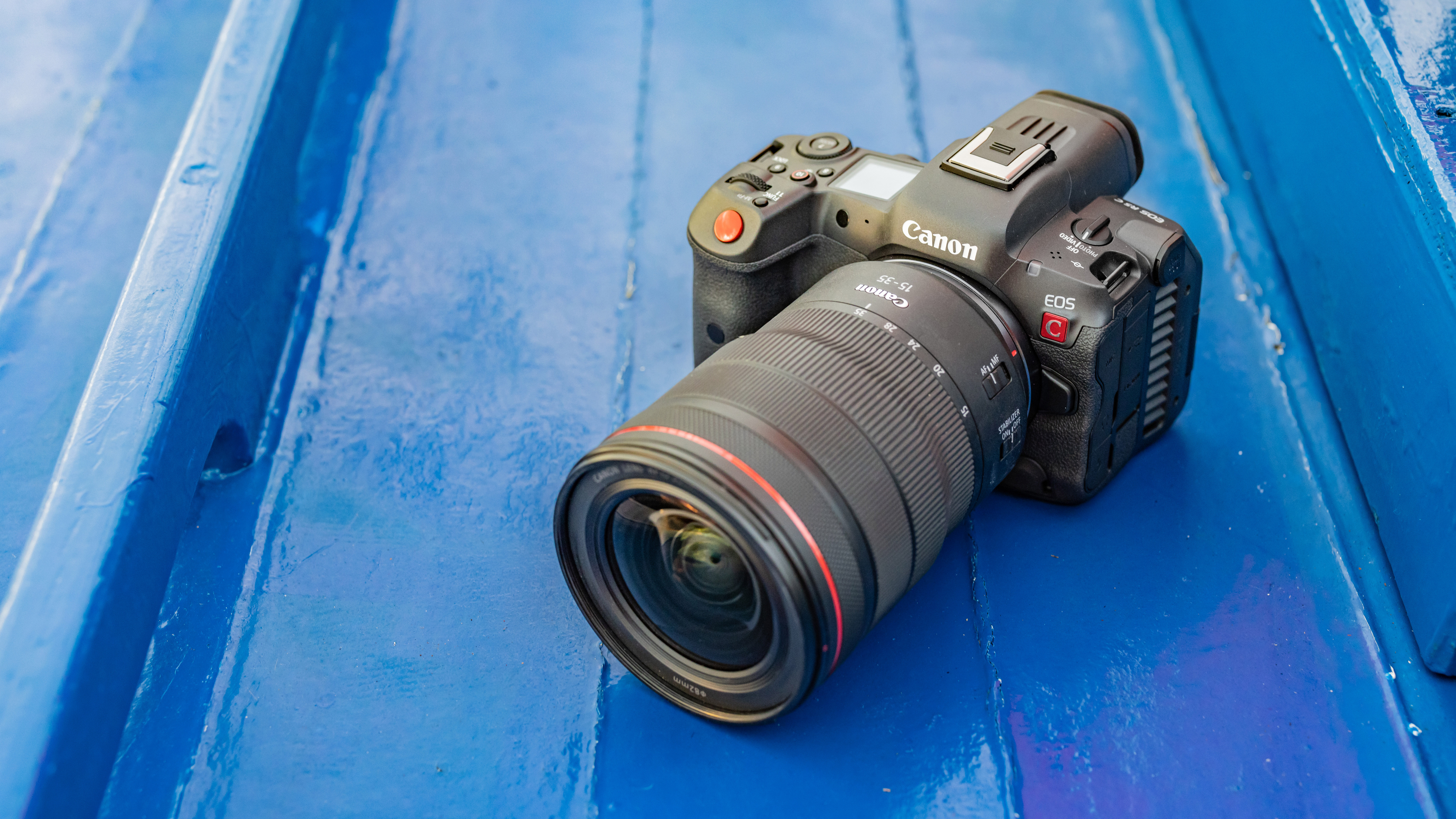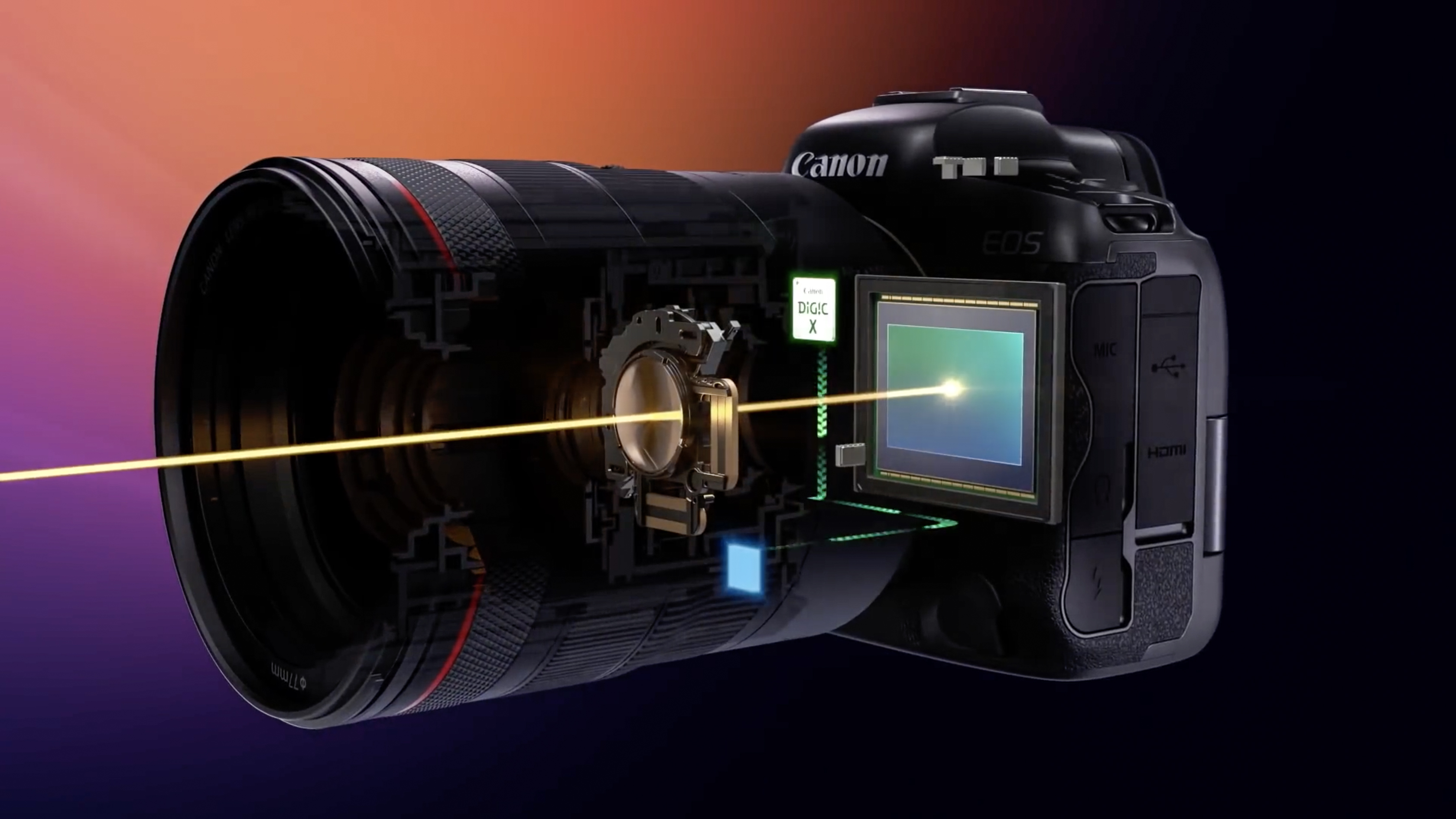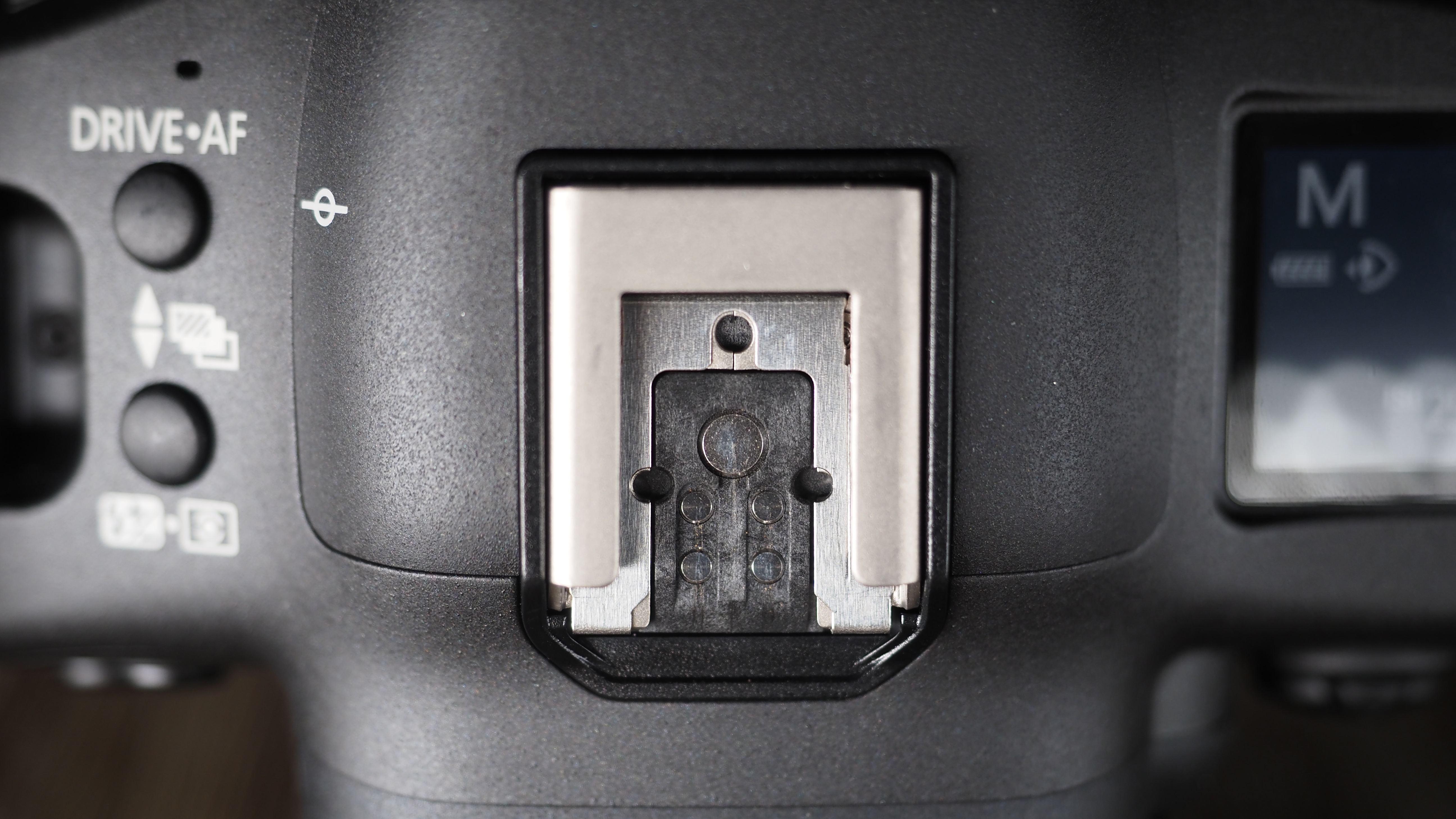5 key differences of the Canon EOS R5 C
At last, the Canon EOS R5 C – a video-focused version of the R5 – has launched! Here are the 5 key differences between them

After months of leaks and rumors, the Canon EOS R5 C has been officially launched by the world's biggest camera manufacturer.
Where the original Canon EOS R5 was a stills-first product that also shot 8K video, the Canon EOS R5 C is a hybrid Cinema EOS device – a video-first product that also shoots photographs.
At their cores, these are very similar cameras; they have the same 45MP full frame sensor, 20fps continuous burst shooting, RF lens mount, dual CFexpress Type B / SD card memory setup… yet there are some very significant changes with the R5 C.
Here, then, are the five key differences between the new Canon EOS R5 C and the existing EOS R5.

Dual Base ISO
The R5 C is Canon's first ever product to feature Dual Base ISO – a technology that enables the camera to shoot natively at two sensitivity settings, rather than one.
This works differently to the Dual Gain Output featured in cameras like the Canon EOS C70, which feature fixed ISO sensitivities (an ISO800 base and Dual Gain from ISO160-25600); the R5 C features different base ISOs depending on the chosen gamma settings (though Dual Base ISO is not available for stills):
| Gamma settings | Dual Base ISO values |
|---|---|
| C-Log 3 / Raw | ISO800 • ISO3200 |
| BT.709 Wide / PQ / HLG | ISO400 • ISO1600 |
| BT.709 Standard / Normal | ISO160 • ISO640 |
8K 60p, 4K 120p with audio, "no limitations"
The Canon EOS R5 C has an integrated cooling system – which, first and foremost, increases the size and weight of the camera (to 142 x 101 x 111mm and 680g (770g with battery and cards), from the 138.5 x 97.5 x 88mm and 650g (738g) of the R5).
Get the Digital Camera World Newsletter
The best camera deals, reviews, product advice, and unmissable photography news, direct to your inbox!
Crucially, though, the new fan means that Canon has solved the heat build-up issue that throttled the original R5's 4K HQ and 8K video recording (and, importantly, still retains the dust- and water-resistance of the base camera).
According to Canon, there are "no limitations on shooting. Obviously with the R5, because it's a stills product first, you've got that limitation on the video shooting capability; with this one, it's about your battery and about your memory card. It's not about the build-up of heat inside the product."
That said, recording durations are still governed by the format and settings at which you capture your footage, ranging from ½ hour to 30½ hours. Click here to see the full breakdown of how this affects video length.
No in-body image stabilization

Unlike the EOS R5 (and the Canon EOS R6 and Canon EOS R3), the Canon EOS R5 C does not possess any in-body image stabilization (IBIS) as the sensor is in a fixed position, which is a lot to do with heat dispersion within the camera body. However, the R5 C does offer electronic and combination image stabilization.
This may seem a curious omission, but the fact is that videographers (and this is a video-first product) are generally not fond of IBIS – mainly because the compensation can cause Jell-O-like "warp" at the edges of the frame (particularly on wide-angle fields of view). In addition, video shooters almost universally use gimbals, which negates the need for IBIS altogether.
No Animal AF / Vehicle AF for video
In stills mode, the R5 C performs exactly like the standard EOS R5 – and it possesses the same Dual Pixel CMOS AF II technology, with Animal AF and Vehicle AF.
However, when booted in video mode, the R5 C employs the original Dual Pixel CMOS AF – which is featured in all Cinema EOS products. This means that, while it still offers head, face and eye tracking in video mode (thanks to the EOS iTR AFX technology, featured on the flagship Canon EOS-1D X Mark III), in video mode it cannot detect animals or vehicles – something that the base EOS R5 can do.
Multi-Function Shoe

Like the Canon EOS R3, the R5 C features the manufacturer's new Multi-Function Shoe – a 21-pin hot shot that enables power deliver to and communication with accessories such as the the Canon DM-E1D shotgun mic and Canon ST-E1 speedlite transmitter.
In addition, because the R5 C is weather sealed, the Multi-Function Shoe offers full weather sealing when used with products like the Canon Speedlite EL-1.
Pre-order the Canon EOS R5 C at Adorama (US)
Pre-order the Canon EOS R5 C at B&H (US)
Pre-order the Canon EOS R5 C at Park Cameras (UK)
Pre-order the Canon EOS R5 C at Wex (UK)
Read more:
Best cinema cameras
Best Canon cameras
Best Canon 8K cameras
Best Canon RF lenses
Best Canon lenses

James has 22 years experience as a journalist, serving as editor of Digital Camera World for 6 of them. He started working in the photography industry in 2014, product testing and shooting ad campaigns for Olympus, as well as clients like Aston Martin Racing, Elinchrom and L'Oréal. An Olympus / OM System, Canon and Hasselblad shooter, he has a wealth of knowledge on cameras of all makes – and he loves instant cameras, too.
